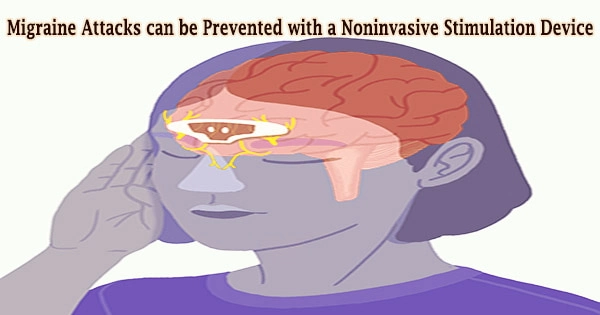A migraine is a headache that usually affects one side of the head and causes extreme throbbing pain or a pulsing sensation. According to the World Health Organization, migraine symptoms, which can be debilitating for many people, are the sixth greatest cause of disability.
While there is no treatment for migraines, a new study published in Cephalalgia in March suggests that single-pulse transcranial magnetic stimulation may be a new strategy to prevent attacks. It’s non-invasive, safe, and simple to use.
A migraine is much more than just a bad headache. It’s commonly accompanied by nausea, vomiting, and excessive light and sound sensitivity. Migraine attacks can last anywhere from hours to days, and the pain might be severe enough to prevent you from going about your usual activities.
The effectiveness of employing a single-pulse transcranial magnetic stimulation device to prevent migraine attacks was recently investigated by researchers at Mayo Clinic and other prominent academic headache centers around the United States.
For certain patients, treatment options for migraines, such as oral medications, are not effective, well-tolerated, or preferred. The sTMS may be a great option for these patients and allow doctors to better meet their unique needs.
Dr. Amaal Starling
Participants in the eNeura SpringTMS Post-Market Observational U.S. Study of Migraine, also known as ESPOUSE, were advised to self-administer four pulses in the morning and four pulses at night for three months to prevent and treat migraine attacks as needed. Spring TMS, often known as sTMS, is a type of transcranial magnetic stimulation.
“The migraine brain is hyperexcitable, and basic science studies have demonstrated modulation of neuronal excitability with this treatment modality,” says Amaal Starling, M.D., a Mayo Clinic neurologist, who is first author of the study.
“Our study demonstrated that the four pulses emitted from this device twice daily reduce the frequency of headache days by about three days per month, and 46 percent of patients had at least 50 percent or less migraine attacks per month on the treatment protocol. This data is clinically significant. Based on the current study and prior studies in acute migraine attack treatment, sTMS not only helps to stop a migraine attack, but it also helps prevent them.”
“For certain patients, treatment options for migraines, such as oral medications, are not effective, well-tolerated, or preferred,” Dr. Starling adds. “The sTMS may be a great option for these patients and allow doctors to better meet their unique needs.”
The sTMS device had already been licensed by the U.S. Food and Drug Administration for the acute treatment of migraine with aura. The FDA has recently approved it for migraine prevention as well.





